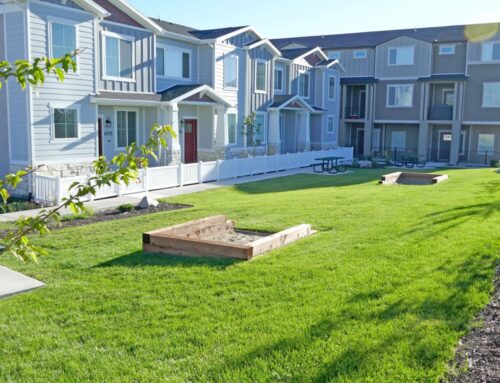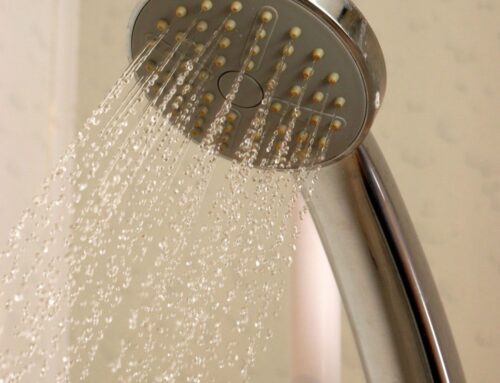Cooking, fingerprints from opening and closing, dust and dirt that naturally happen in a home … there are many things that can make your kitchen cabinets look dingy. And because the cabinets take up such a large part of the kitchen, that can affect the overall cleanliness and appearance of the kitchen. So, it’s a good idea to regularly clean the cabinets to keep them looking their best and avoid potential damage caused by grease and dirt. Here are some tips for cleaning your cabinets without damaging them (hint: be careful with how much water you use).
How Often to Clean Cabinets
For the exterior, it is best to clean the cabinets every one to two weeks, including any pulls. This will help keep grease, food debris, and dirt at a minimum and help you avoid needing to deep clean. However, if you notice any grease, food, or sauce splatters on cabinets between cleanings, spot-clean them right away.
For the interior of your cabinets, every three to six months is a good timeframe for cleaning. Check food expiration dates and throw any that have expired out, then wipe shelves down.
Notes of Caution Before Starting
No matter what method you use to clean your cabinets, keep in mind that water can damage cabinets when too much is applied and/or water is allowed to sit on cabinets. Limit water usage by wringing cleaning cloths out well and thoroughly dry cabinets when done cleaning.
Water can also damage hinges, so when cleaning keep water away from the hinges. If you need to clean those, use a dry microfiber cloth to remove dust and grime.
Never use abrasive cleaners or brushes on your cabinets, and do not scrub harshly, all of which can damage the finish of your cabinets. If you are struggling to clean corners, trim, and other crevices in the cabinet, you can use a soft-bristle toothbrush. Just be sure to gently scrub with it.
If you use vinegar to clean hardware, which is commonly recommended on cleaning blogs, be careful not to get it on the cabinets and if you do, clean it off right away. Vinegar has acidic properties that can damage the cabinets, particularly if they are wood.
What to Use to Clean
Dish Soap: Add one squirt of dish soap to a bucket of warm water, dip a cloth into the water, wring it out well, then wipe down the surface of the cabinet. Start at the top and work down, spending extra time on molding or trim where dust can accumulate and anywhere you see grease, food, and stains. Once you are done cleaning, take a damp cloth that has been wetted with water only and wipe the cabinets down. This will remove any residue that may be left over from the initial cleaning. Finish by wiping the cabinets down with a dry cloth to remove all water from the surface. Do not leave any water on the cabinets – that can cause permanent damage to them.
Multi-Purpose Cleaner: Before using any type of cleaner on your cabinets, make sure your surface (wood, veneer, paint, etc.) is a recommended surface on the label. Once you know you are using the right cleaner for your surface, it’s a good idea to test the spray in an inconspicuous area to ensure it won’t damage your cabinets. When cleaning, spray the cleaner on your cloth, not directly on the cabinets. Clean from top to bottom and pay close attention to trim and molding and areas with visible grease, food, and other stains. Once you are done cleaning, take a damp cloth that has been wetted with water only and wipe the cabinets down. This will remove any residue that may be left over from the initial cleaning. Finish by wiping the cabinets down with a dry cloth to remove all water from the surface. Do not leave any water on the cabinets – that can cause permanent damage to them.
What Not to Use to Clean
Never use abrasive cleaners or brushes on your cabinets, and don’t scrub harshly, all of which can damage the finish. If you feel like you need a brush to get into corners, trim, or molding, a soft-bristled toothbrush is a good option, but be gentle when scrubbing with it.
Stubborn Grease
For stubborn grease or stains, you have two options: a multi-purpose cleaner with citrus oil (a known degreaser) or a baking soda paste. For the multi-purpose cleaner, test a small spot to make sure it won’t damage the cabinet. Once you have ensured it is safe to use, let the cleanser sit on the spot for a few minutes before wiping it with a cloth pre-dampened with warm water. Finish by wiping the area with a dry cloth to remove all water.
The baking soda paste can be made by mixing one part baking soda with two parts water. Use a clean, dry cloth to dab the paste on the spot and let it sit for a few minutes. Wipe it away with a damp cloth, gently rubbing until the grease or stain is gone. Wipe the spot with a cloth dampened by water, then use a dry cloth to remove all water.
Looking for your dream home? Liberty Homes has been building new homes in Utah for nearly 30 years. We take pride in our trade, crafting each home as if it were our own. Our quality, affordable homes are energy smart and thoughtfully personalized for your active Utah lifestyle. We currently have townhomes available in Salt Lake County, single-family homes in Heber City, and 55-plus single-family homes in West Jordan. Contact us today to find your dream home.

Want home decorating and maintenance tips, craft ideas, recipes, and more delivered right to your inbox?
Sign up for our monthly newsletter:




